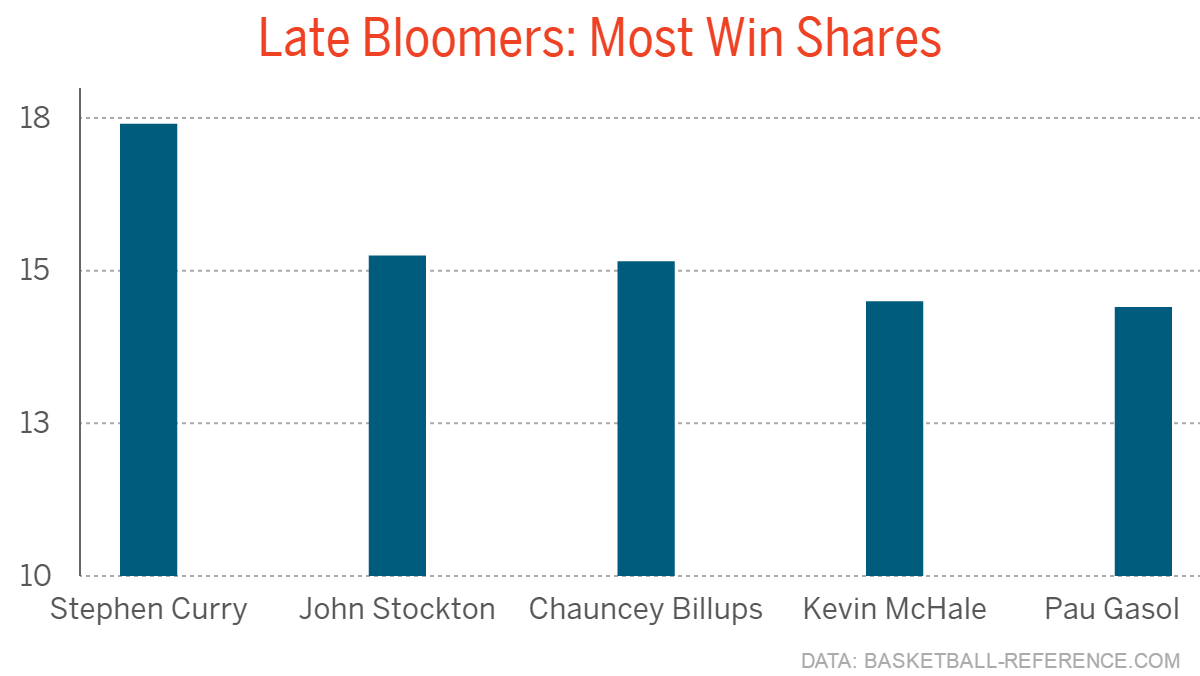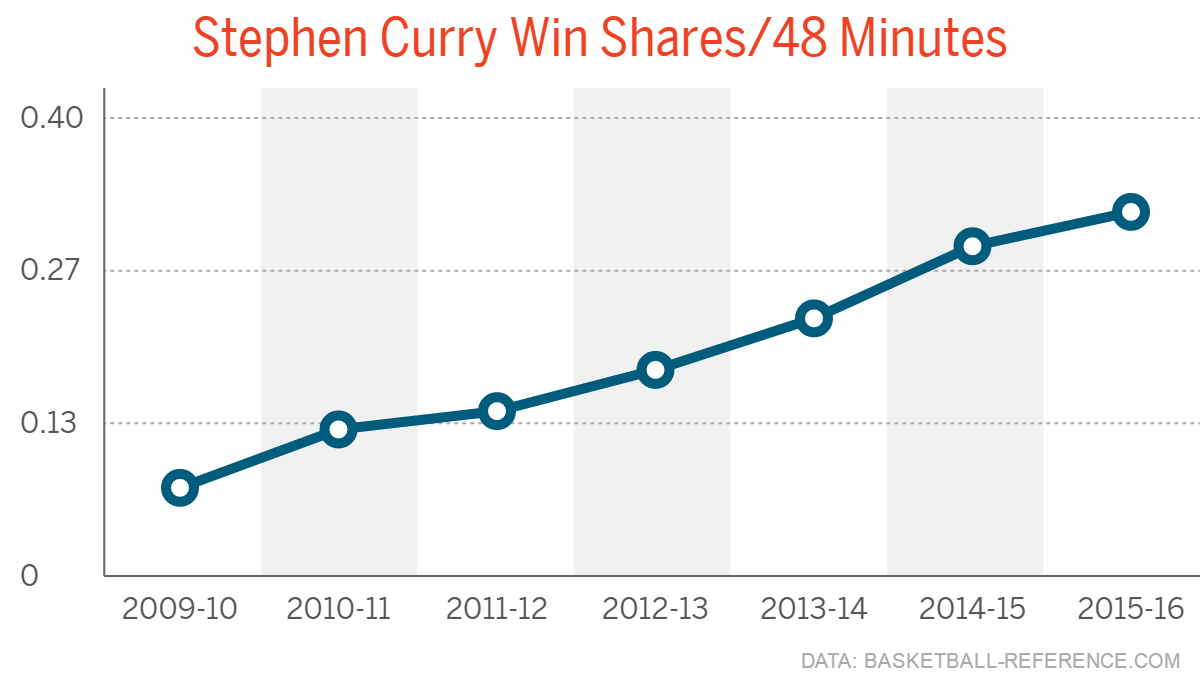Imagine someone predicted four years ago that Stephen Curry would be a two-time MVP and arguably the best player in an NBA Finals matchup against LeBron James and the Cleveland Cavaliers.
It's impossible, and not because LeBron was in Miami four years ago, winning his first NBA title.
It's impossible because Curry has accomplished something that no NBA player has ever done before. There is no one in NBA history like Steph Curry.
The chosen one versus the rejected one
Since high school, James has been destined for greatness. The No. 1 overall pick out of St. Vincent-St. Mary High School in nearby Akron, James was an All-Star in his second season and an MVP by age 24.
If James is "the chosen one," Golden State Warriors counterpart Stephen Curry was the rejected one.
Not by the NBA, entirely, as Curry was the No. 7 overall pick of the 2009 NBA draft. However, that label certainly applies at the college level, as ACC schools -- including Virginia Tech, the alma mater of Curry's father Dell -- passed on recruiting Curry, leading him to Davidson of the Southern Conference.
Four years ago, Curry was the age James had been when winning his first MVP award -- the first of four in five seasons. At age 24, Curry had never been an All-Star and was coming off a season marred by ankle injuries. Those health concerns led him to sign a four-year, $44 million extension that has become one of the greatest bargains in NBA history.
Because of his remarkable development since then, Curry can claim another label -- the greatest late bloomer the league has ever seen.
Multitime MVPs shine early
Curry's difficulties getting a major college scholarship have been well-documented. But because recruiting and the entire landscape of college basketball have changed so dramatically over the past six decades, it's not really fair to use amateur rankings to compare Curry to past superstars.
Even at the NBA level, however, Curry's rise was uniquely late. Curry did not make his first All-Star Game until his fifth pro season, when he was already 25 and about to turn 26. Compare that to the 12 other players who have won multiple NBA MVP awards.
On average, the other 12 players made their All-Star debuts closer to age 22 than 23. And 10 of the 12 were All-Stars by their second NBA seasons. Besides Karl Malone, who reached All-Star status in Season 3, the other outlier on this list is Steve Nash, whose rise most closely parallels Curry's.
Like Curry, Nash was unwanted by major-conference schools after dominating lesser competition in British Columbia, and he landed at midmajor Santa Clara. It actually took Nash six seasons to become an All-Star, and his first appearance in the All-Star Game came just after his 28th birthday.
Still, despite his back-to-back MVP trophies, Nash never got to the level Curry has reached as the consensus best player in the NBA. It's this final step, to all-time greatness, that sets Curry apart from all his forerunners.
Best late bloomers
Using Basketball-Reference.com's win shares, which date back throughout NBA history, we can look at the best players to make their All-Star debuts as late as Curry. Among those who entered the league after the NBA began playing the All-Star Game in 1951, here are the late-blooming All-Stars who accumulated the most win shares in their best single season.

This group doesn't include Nash, who peaked at 12.6 win shares in 2006-07, the year after he won his second MVP trophy. It's notable, however, that the top three players on the list as well as Nash and Gary Payton (also in the top 10) are all point guards. Because their games are so based on skill, which tends to peak later than athleticism, it's reasonable to expect point guards to develop later than their peers at other positions.
That's certainly the case with Curry, who has continued improving throughout his career. Curry's win shares per 48 minutes have increased every season of his career. (The same is true of his player efficiency rating, though his improvement between 2011-12 and 2012-13 was marginal in terms of PER.)

That ties Curry with three other players, none of them superstars or anywhere close, for the longest streak of improvement in the NBA. Jay Humphries, Thabo Sefolosha and Sedale Threatt also saw their win shares per 48 minutes increase each of their first seven seasons. None of them had to improve on a season that already resulted in winning MVP.
Because of aging, despite past improvement players find it progressively more difficult to take another stop over time. There's a relatively large group of players (19 in all) who increased their win shares per 48 minutes over a six-season span, but just four of them managed to do so another season. And if Curry were to improve again next season -- which seems unthinkable -- he'd be the first player in NBA history to extend his streak that long.
How Curry has kept improving
Curry's path to superstardom started with better health. He couldn't develop his skills while he was busy rehabbing recurring ankle injuries. After Curry underwent season-ending surgery in April 2012 and again dealt with ankle problems in the 2013 playoffs, the Warriors' sports medicine staff worked with him to develop his core strength and use his hips rather than his ankles to generate force, as Pablo Torre detailed for ESPN.com earlier this year.
Since then, Curry has managed to improve both his strengths and his weaknesses. Always a great shooter, Curry has gone to a different level by extending his range and using his tight handle on the ball to generate 3-point opportunities off the dribble unlike anyone in the NBA.
As a result, Curry has been able to devote an increasing percentage of his shots to higher-value 3-pointers -- he shattered the old NBA record of 8.7 3-point attempts per game, held by Baron Davis, by trying 11.2 this year -- without sacrificing any accuracy.
Meanwhile, Curry has also gotten far better inside the arc. The threat of him pulling up for 3, along with his ballhandling, allows him to get into the paint on a regular basis. And, as Ben Alamar analyzed using player-tracking data, Curry has become one of the league's best finishers around the basket.
Then there's defense. Curry's reputation as a poor defender dates back to his early career, when he struggled to keep up physically with the athleticism of the league's best point guards. Former Golden State coach Mark Jackson challenged Curry to improve defensively, and he's responded by becoming an underrated presence at the defensive end of the court.
Different paths to same point
Neither James nor Curry could have become multitime MVPs without impressive development. High expectations or no, James also expanded his game well into his 20s, emerging as a more efficient scorer while playing for the Miami Heat. It's also worth noting, as Mike Wise of the Undefeated did earlier this week, that from a different perspective James has overcome much longer odds than Curry to become a superstar.
Nonetheless, from an NBA standpoint, James' development was relatively typical and to some extent even predictable. Curry's maturation from an overlooked high-school recruit and a good but fairly ordinary player as recently as four years ago into perhaps the league's brightest star is one of a kind.
"He's kind of always been the underdog, and all of a sudden he's the two-time MVP," Warriors coach Steve Kerr said to the media before the Finals. "That's a strange situation. Hardly any players have ever done that. I guess Steve Nash would be the other one that would come to mind right away."
Even Nash, a sure Hall of Famer who peaked after age 30, didn't reach the heights that Curry has already reached at age 28. And Curry's not done yet.
